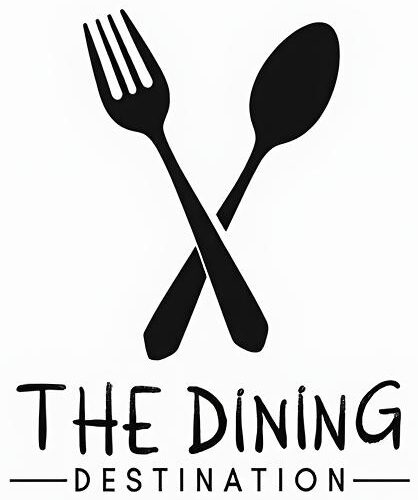Understanding the Heart of Kitchen Operations
What is a sous chef? A sous chef is the second-in-command in a professional kitchen hierarchy, working directly under the executive chef or head chef. This critical role combines culinary expertise with leadership responsibilities, serving as the operational backbone of restaurant kitchens worldwide.
Here’s what you need to know about sous chefs:
| Sous Chef Essentials | Description |
|---|---|
| Position | Second-in-command in the kitchen hierarchy |
| Origin | French term meaning “under-chef” |
| Reports to | Executive Chef/Head Chef |
| Primary duties | Supervising kitchen staff, quality control, inventory management, training |
| Average salary | $50,000-$60,000 annually in the US |
| Work hours | Typically 50-60 hours per week |
| Career path | Usually requires 5-10 years of kitchen experience |
In professional kitchens, sous chefs are the essential link between the executive chef’s vision and its daily execution. They’re the operational managers who ensure everything runs smoothly, from supervising line cooks to maintaining quality standards.
The term “sous chef” originates from French culinary tradition, with “sous” meaning “under” or “subordinate.” While the executive chef may be the creative visionary and public face of the kitchen, the sous chef is often the unsung hero who makes sure everything actually happens behind the scenes.
As Barry Tonkinson, a culinary expert, explains: “It is imperative that the sous chef is well-versed in all aspects of the menu and all stations in the kitchen” to maintain consistency and quality throughout service.
For those considering a culinary career, understanding the sous chef position is crucial—it represents both a significant achievement and a stepping stone to higher positions. The role demands technical prowess, leadership skills, and the ability to perform under pressure, with a CNN Business survey finding that 83% of sous chefs report experiencing significant stress in their jobs.

Defining the Role: What Is a Sous Chef?
What is a sous chef in its simplest form? The term comes from French culinary tradition, where “sous” translates to “under” or “subordinate.” So literally speaking, a sous chef is an “under-chef” who works directly beneath the executive chef in the kitchen’s chain of command.
But this straightforward definition barely scratches the surface of what this pivotal role actually entails. In reality, a sous chef serves as the operational heartbeat of any professional kitchen, breathing life into the executive chef’s culinary vision while orchestrating the daily symphony of kitchen staff and ensuring every plate meets exacting standards.
As one seasoned New York City executive chef colorfully puts it: “My sous chef is my right hand, my eyes and ears when I can’t be there, and sometimes my therapist too. They’re the one person I need to trust completely to maintain my standards.”
What Is a Sous Chef in Modern Kitchens?
In today’s culinary world, what is a sous chef has evolved considerably. The modern sous chef is the day-to-day commander of kitchen operations, a culinary Swiss Army knife ready to tackle whatever challenges arise during service.
The contemporary sous chef wears many hats – they’re simultaneously a coach, quality inspector, mentor, inventory manager, and problem-solver. They conduct meticulous quality checks before dishes leave the kitchen, train new staff members with patience and precision, manage inventory with eagle-eyed attention to detail, enforce safety protocols with unwavering diligence, and juggle staffing schedules with the finesse of a master planner.
What truly sets exceptional sous chefs apart is their remarkable versatility. As one culinary educator notes: “A great sous chef can step into any station seamlessly when needed, whether it’s working the grill during a rush or plating delicate desserts when the pastry chef calls in sick.”
What Is a Sous Chef vs Head Chef?
When exploring what is a sous chef, it’s crucial to understand how the role differs from that of the head chef or executive chef. While both positions demand culinary expertise and leadership abilities, they occupy distinctly different territories in the kitchen ecosystem:
| Area | Sous Chef | Executive/Head Chef |
|---|---|---|
| Primary Focus | Daily operations and execution | Overall vision and strategy |
| Menu Role | Implements and executes menu | Creates and designs menu concepts |
| Staff Interaction | Direct daily supervision | Higher-level management and hiring |
| External Relations | Limited vendor contact | Media, guests, and business partners |
| Hours Present | Almost all service hours | May have more administrative time |
| Creative Input | Collaborative suggestions | Final creative authority |
| Business Aspects | Limited financial oversight | Profit/loss responsibility |
| Public Visibility | Behind the scenes | Often public-facing |
The head chef typically brings more extensive experience to the table, setting the culinary direction and overall tone for the kitchen team. Meanwhile, the sous chef ensures this vision materializes consistently on every plate, every service.
A restaurant owner in New York City perfectly captures this dynamic: “The head chef might create the signature dishes that get us press, but it’s the sous chef who makes sure those dishes taste exactly the same whether the head chef is in the kitchen or not.”
Understanding the sous chef position is essential whether you’re planning your own culinary career or simply want to appreciate the inner workings of your favorite restaurants when exploring new dining trends. For a formal definition, you can check Dictionary.com’s definition of sous chef.
Origins and Kitchen Hierarchy

Ever wondered where the structured kitchen teams we see today came from? The modern kitchen hierarchy—including the vital sous chef position—has fascinating historical roots. It all began with Georges Auguste Escoffier’s brigade de cuisine system in the late 19th century. Drawing inspiration from military organization, Escoffier transformed chaotic kitchens into well-oiled machines with clear chains of command.
Think of a professional kitchen as a carefully choreographed dance, with each member playing a specific role. The executive chef conducts the orchestra, while the sous chef serves as the critical first violin—ready to lead when the conductor steps away. Below them, station chefs (chefs de partie) manage specialized sections like grill or pastry, supported by junior cooks (commis) who are learning the ropes.
Historical Roots of the Sous Chef Title
The story of the sous chef position begins in the busy kitchens of 19th-century France. As restaurants grew more sophisticated and dining became an art form, executive chefs needed trusted deputies to help manage increasingly complex operations.
The term itself—”sous” meaning “under” in French—perfectly captures the relationship: the under-chef who supports and sometimes stands in for the top chef. While the position existed in French kitchens for generations, the English-speaking world first documented the term “sous chef” around 1892. As Escoffier’s brigade system gained international acclaim, luxury hotels and fine dining establishments worldwide adopted this hierarchical approach.
What’s remarkable is how little the core relationship between executive chef and sous chef has changed over more than a century. Though today’s kitchens may be less rigid in some ways, that essential partnership—the visionary leader and their practical right hand—remains the backbone of successful restaurants.
Position in Today’s Restaurants
Walk into different types of food establishments today, and you’ll find the sous chef role adapted to fit various needs:
In the glittering world of fine dining, you might find multiple sous chefs working in harmony—perhaps one handling morning prep while another orchestrates dinner service. Large hotels often employ several sous chefs managing different restaurants within the property.
Neighborhood bistros typically rely on a single sous chef working closely with the head chef, while massive institutional kitchens (think hospitals or universities) might have sous chefs managing large production teams with less creative input.
“In our restaurant group, we have different types of sous chefs,” explains a New York City culinary director. “Some are clearly on track to become executive chefs and are learning the business side. Others are technical specialists who excel at maintaining consistency across multiple outlets.”
Cruise ships present a unique challenge, with sous chefs often managing specific dining venues across the vessel. Meanwhile, catering operations rely heavily on sous chefs to handle the logistical puzzles of off-site food preparation and service.

Core Responsibilities and Daily Workflow
Ever wondered what is a sous chef actually doing all day? While no two kitchens are identical, the sous chef’s core responsibilities form the backbone of any successful restaurant operation. This culinary conductor blends hands-on cooking with leadership, quality control, and operational wizardry.
Think of the sous chef as the kitchen’s air traffic controller – they’re coordinating multiple moving parts while keeping a keen eye on quality and timing. They supervise kitchen staff, ensuring everyone is executing dishes correctly and efficiently. They’re also deeply involved in food preparation, overseeing (and often demonstrating) proper techniques to maintain the restaurant’s standards.
Quality control sits at the heart of the sous chef’s mission. They’re the final checkpoint before dishes reach diners, scrutinizing everything from taste and presentation to portion size. Behind the scenes, they manage inventory, place orders, and fight the constant battle against food waste – a critical factor in restaurant profitability.
“My sous chef is the guardian of our standards,” explains one New York executive chef. “When I create a new dish, they’re the one who makes sure it’s executed perfectly every single time, whether I’m in the kitchen or not.”

A Typical Day on the Line
To truly understand what is a sous chef, let’s walk through what their day typically looks like:
The morning begins early – usually around 8 AM – well before most staff arrive. The sous chef reviews reservations and special events, checking for any VIPs or large parties that might impact service. As deliveries arrive, they inspect everything for quality and accuracy. “I once sent back an entire fish delivery because it wasn’t fresh enough,” shares a sous chef from a seafood restaurant. “Those decisions protect both our standards and our guests.”
By mid-morning, they’ve created detailed prep lists for each station and conducted the morning briefing. While line cooks tackle their stations, the sous chef might be tasting and adjusting the day’s stocks and sauces, the foundation of many dishes.
The lunch rush brings the sous chef to the expediting station, calling out orders and ensuring each plate meets standards before reaching guests. Between lunch and dinner, they might meet with the executive chef to discuss evening service, continue prepping, or train staff on new techniques.
Evening service is when everything comes together. The sous chef leads the pre-service meeting, assigning stations and reviewing specials. During the dinner rush, they become the kitchen’s central nervous system – expediting orders, maintaining timing, quality-checking dishes, and troubleshooting any issues that arise.
“During service, I’m constantly scanning for problems before they happen,” explains one sous chef at a popular bistro. “Is that steak going to be ready when the fish is plated? Is someone running low on prepped items? Do we need to adjust timing for a large party? It’s like playing chess while riding a bicycle in a thunderstorm.”
After service winds down, they oversee kitchen breakdown and cleaning, then plan for the next day before finally heading home – often 12-14 hours after arriving.
For a more detailed breakdown of responsibilities, you can review this comprehensive Sous Chef Job Description from Culinary Career.
Skills, Training & Career Path
The journey to becoming a sous chef combines technical mastery, leadership development, and personal growth—a path that requires both passion and perseverance. Let’s explore what it takes to excel in this pivotal kitchen role.
Essential Skills for Successful Sous Chefs
Behind every great sous chef is a foundation of culinary expertise paired with management finesse. The technical skills—advanced knife techniques, flavor profiling, and diverse cooking methods—are just the beginning. What truly sets exceptional sous chefs apart is their ability to lead teams through the controlled chaos of busy service.
“The best sous chefs I’ve worked with can simultaneously cook a perfect steak, coach a struggling line cook, and reorganize the night’s game plan when we’re short-staffed—all without breaking a sweat,” says a veteran executive chef from a busy New York bistro.
The role demands a unique blend of abilities: kitchen expertise for credibility, communication skills to direct staff clearly during high-pressure situations, and emotional intelligence to manage the diverse personalities that make up a kitchen team. Successful sous chefs are masters of time management, often juggling multiple priorities while maintaining the high standards diners expect.

Education and Certifications
When considering what is a sous chef’s educational background, you’ll find diverse paths to success. While some rise through the ranks purely through on-the-job experience, others accelerate their journey through formal education.
Many aspiring chefs begin with a culinary arts degree or diploma, which provides structured training in both cooking techniques and kitchen management. These programs typically include hands-on kitchen time alongside courses in food safety, nutrition, and business operations.
Industry certifications add valuable credentials to a chef’s resume. The ServSafe Food Protection Manager certification is practically essential, while the Certified Sous Chef (CSC) designation from the American Culinary Federation signals professional achievement. Canadian chefs often pursue the respected Red Seal certification.
“My culinary school training gave me a solid foundation,” shares one sous chef at a popular farm-to-table restaurant, “but my real education came from staging at different restaurants and learning from chefs with diverse styles. You need both technical skills and real-world experience.”
For those interested in formal culinary education, programs like the Cook (Cuisine) Apprenticeship at Humber College offer structured pathways to develop the necessary skills.
Compensation, Challenges & Advancement
So, what is a sous chef actually earning for all that hard work? Let’s talk about the reality of life in those chef whites – both the rewards and the challenges that come with this demanding role.
Compensation and Benefits
The financial picture for sous chefs varies quite a bit depending on where you’re cooking and what kind of establishment you’re running:
- Average Annual Salary: Around $50,943 in the United States
- Typical Range: Most sous chefs earn between $44,000 and $60,000
- City Matters: If you’re chopping and sautéing in New York City, you might see around $60,000, while San Francisco sous chefs often command upwards of $62,000
“I didn’t get into cooking for the money,” laughs Maria, a sous chef at a popular Brooklyn restaurant. “But after years of paying my dues as a line cook, the bump in salary when I made sous was definitely welcome.”
Beyond the base pay, some sous chefs receive additional perks – though these vary widely by restaurant. Health insurance is more common in hotel kitchens or restaurant groups than in independent spots. Almost all kitchens offer shift meals (thank goodness, since you’ll rarely have time to eat otherwise!), and some higher-end establishments might offer continuing education allowances or performance bonuses.
One thing to note: while the hourly rate might look decent on paper, sous chefs typically clock 50-60 hours weekly, including those dreaded weekend shifts when everyone else is brunching or enjoying dinner with friends.

Coping With Heat & Pressure
There’s a reason that CNN Business survey found 83% of sous chefs reporting significant stress in their jobs. The position combines physical demands, mental pressure, and management challenges in a environment where mistakes are immediately visible.
“The hardest part isn’t the cooking – it’s juggling everything at once while keeping your cool,” explains James, a veteran sous chef from Chicago. “You’re simultaneously expediting orders, jumping on the line when someone falls behind, putting out fires both literal and figurative, all while maintaining standards.”
The most successful sous chefs develop personal strategies to handle the pressure:
Finding physical balance becomes essential when you’re on your feet for 10+ hours. Comfortable shoes are non-negotiable, staying hydrated is critical (despite the endless coffee temptation), and finding time for physical activity outside work helps counteract the physical strain.
Mental wellness practices separate those who burn out from those who thrive. Some sous chefs swear by meditation before shifts, others by completely unplugging on their days off. Almost all emphasize the importance of protecting at least one full day away from the kitchen each week.
Frequently Asked Questions about Sous Chefs
How long does it take to become a sous chef?
The journey to becoming a sous chef isn’t a sprint—it’s more of a culinary marathon that typically takes 5-10 years of kitchen experience. Think of it as seasoning a cast iron pan: it takes time to develop properly.
Your timeline might speed up or slow down based on several factors. Culinary school graduates often have a head start, sometimes landing sous chef positions in 3-5 years rather than the traditional 5-10. The kitchen environment matters too—high-volume restaurants or prestigious establishments can be pressure cookers for skill development, though competition for advancement might be fiercer.
Personal qualities make a huge difference as well. Those with exceptional natural aptitude, strong leadership skills, and the kind of work ethic that makes others take notice tend to climb the ladder faster. And never underestimate the power of a good mentor—working under a chef who actively invests in developing talent can shave years off your journey.
Most chefs follow a well-worn path: starting in entry-level positions (perhaps as a dishwasher or prep cook), advancing to line cook, moving up to chef de partie (station chef), and finally reaching sous chef. Each stage builds critical skills you’ll need for the increased responsibilities ahead.
Is the sous chef always second-highest rank?
In the classic brigade system created by Escoffier, yes—the sous chef sits directly below the executive chef or chef de cuisine as the clear second-in-command. But modern kitchens have evolved beyond this rigid structure, creating some interesting variations.
Large operations like hotels or resorts might employ an executive sous chef who oversees other sous chefs. Corporate restaurant chains often have corporate chef positions that outrank the executive chefs at individual locations. Hotel kitchens frequently operate with an executive chef overseeing multiple restaurants, each with its own chef de cuisine and sous chefs beneath them.
Restaurant groups with multiple concepts might employ culinary directors who sit above individual restaurant executive chefs in the hierarchy.
What remains consistent across these variations is the sous chef’s core function: they serve as the operational lieutenant within their specific kitchen, translating the head chef’s culinary vision into daily execution, regardless of the exact organizational chart.
Do sous chefs need formal education?
The short answer? No—a diploma isn’t mandatory, but it certainly can help.
Many successful sous chefs have never set foot in a culinary classroom, instead earning their education through the “school of hard knocks” in professional kitchens. However, formal education offers distinct advantages that can make your journey smoother.
Culinary school provides accelerated learning of techniques and theory that might take years to pick up on the job. You’ll gain exposure to diverse cuisines and methods, receive business training that’s often missing in kitchen education, and build professional networks that can open doors throughout your career.
Alternative paths include working your way up through kitchen ranks with on-the-job training, participating in structured apprenticeship programs, taking focused short courses while working, or doing stages (culinary internships) at prestigious restaurants.
As one executive chef at a renowned New York restaurant told us: “I don’t care if my sous chef went to culinary school or not. I care that they have mastered their craft, can lead a team effectively, and have the hunger to keep learning every day.”
Many of the most successful sous chefs take a hybrid approach—they might not have formal degrees, but they continuously invest in their education through workshops, certifications, and self-study throughout their careers. The key is to never stop learning, whether in a classroom or on the line.
Conclusion
Understanding what is a sous chef goes far beyond the simple definition of “under-chef.” This role truly represents the beating heart of professional kitchens worldwide—the crucial bridge connecting creative culinary vision with flawless daily execution.
Throughout this guide, we’ve seen how sous chefs blend technical mastery with leadership finesse to maintain consistency, quality, and smooth operations. They’re the problem-solvers who jump in when the grill station gets overwhelmed. They’re the mentors patiently showing a new line cook the perfect technique. They’re the quality guardians ensuring every plate that leaves the kitchen meets exacting standards—even on a Saturday night with 200 covers.
For those climbing the culinary ladder, reaching sous chef status marks both a tremendous achievement and a potential springboard to executive positions or even your own restaurant someday. The journey isn’t easy—it demands dedication, resilience, and equal passion for both exquisite food and effective leadership.
For food enthusiasts and diners, knowing what is a sous chef adds a richer dimension to your dining experiences. That consistently perfect meal at your favorite restaurant? Behind that reliability stands a dedicated sous chef making sure every detail meets the standard, whether the executive chef is in the kitchen or not.
At The Dining Destination, we deeply appreciate the vital role sous chefs play in creating the extraordinary culinary experiences we love finding and sharing. Their behind-the-scenes work makes possible those memorable meals that become the highlights of our travels.
Whether you’re contemplating a culinary career path or simply deepening your appreciation for restaurant operations, we hope this guide has illuminated the essential nature of this pivotal kitchen position. The next time you enjoy an exceptional meal, perhaps you’ll spare a thought for the sous chef who helped make it possible.
For more insights into professional kitchens and global culinary trends, explore our other resources at The Dining Destination and start planning your next unforgettable dining trip.







